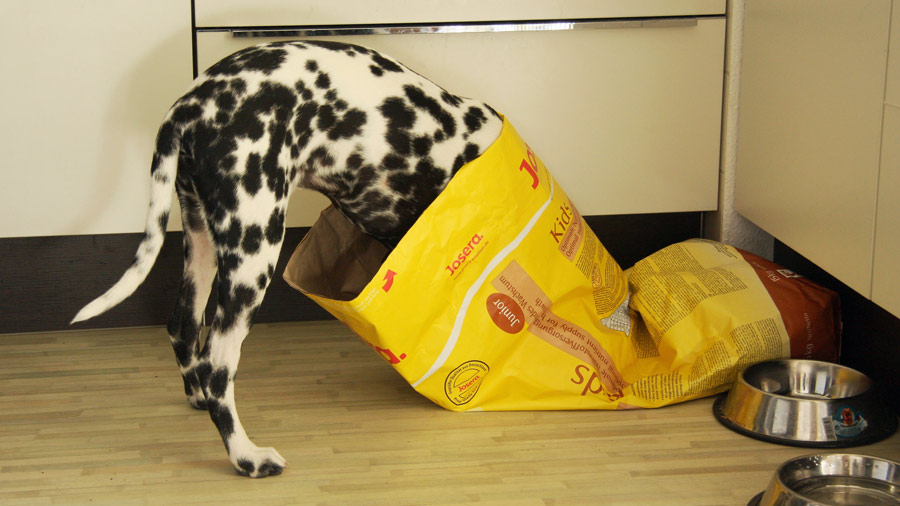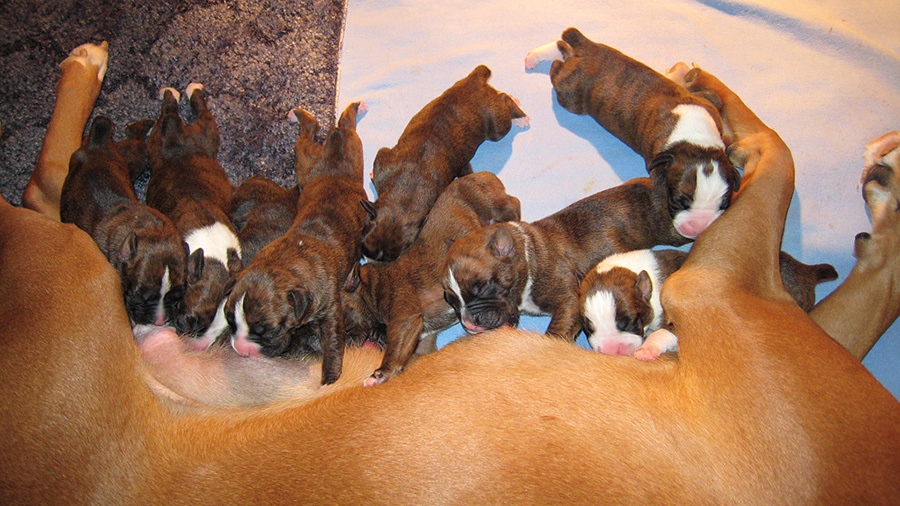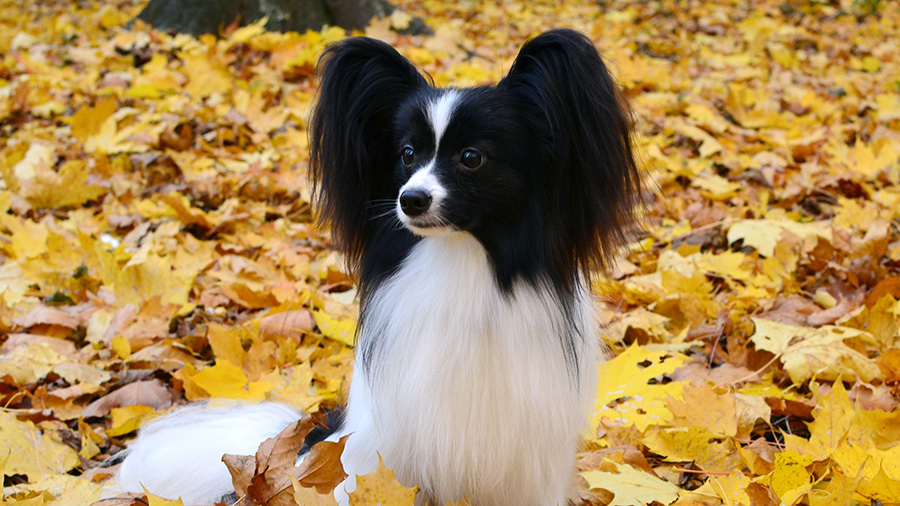Grain-Free Dog Diet: Separating Fact from Fiction
While both dogs and cats are formally classified in the order Carnivora, dogs are in fact considered omnivores (more similar to bears, skunks and raccoons) and cats are considered obligate carnivores.
Even though neither dogs nor cats require dietary carbohydrates in most situations, they both have the ability to digest, utilize and benefit from them (including grains) as part of a nutritionally balanced diet.
A diet of meat and potatoes for a dog or seafood and peas for a cat is no more or less physiologic than a diet of meat or seafood and rice. However, many people now assume that the potato or pea diet is superior only because it lacks grains.
Much of this information is due to marketing by manufacturers who are looking for ways to gain a competitive advantage and make their diets stand out in a crowded marketplace.
Check out our Nutrition Strength Immune Support for Dogs here.
Grain-Free Diets: An Alternative but Not Mandatory Option
Unfortunately, there is a lot of misinformation currently being propagated regarding grains in pet foods. Contrary to popular belief, grain-free diets do not offer health benefits over a diet that contains grains and each diet should be assessed based on its overall nutrient profile rather than individual ingredients.
Regardless of whether an animal is a dog or a cat, its body does not treat grains differently from other sources of carbohydrates — the body recognizes food by the nutrients it provides, not by whether the source is a grain, potato or apple.
Digestion of grains is no different from digestion of other carbohydrate sources that have similar nutrient profiles. Many pet owners have been led to believe that dogs and cats lack the enzymes or capacity needed to digest grains as compared to potatoes, peas, apples and other sources of carbohydrates used in grain-free diets.
The truth, however, is that the starch (the main carbohydrate) in appropriately prepared grains is highly digestible (usually 95% or greater) for both dogs and cats.
Dogs and cats can digest and utilize grains as well as other sources of carbohydrates.
Grain-Containing Diets Are Comparable in Nutrition to Grain-Free Diets
Many of the current grain-free diets are actually similar in nutrient profiles to most other pet foods, as can be seen in the table below. In fact, in contrast to common perception, they are often not particularly low in carbohydrates — they just avoid grains as a source of carbohydrates.
| Popular Grain-Free Diet | Popular Diet | |
| % Calories from protein | 26 | 24 |
| % Calories from fat | 36 | 38 |
| % Calories from carbohydrates | 38 | 38 |
| Main carbohydrate source | Potato, pea | Corn, sorghum, rice, barley |
Check out our Nutrition Strength Multivitamins for Dogs here.
Some pet food manufacturers of grain-free diets suggest that grains are used as “cheap fillers” in diets. However, grains contain protein and many important vitamins and minerals so, in fact, they do provide nutritional value, not just “empty calories”.
Many manufacturers of grain-free diets substitute simple carbohydrate sources such as potatoes and tapioca for more nutrient-packed grains, even as they are marketing the diet as being healthier for the pet.
However, when potatoes and tapioca are compared to grains such as corn and oats, common non-grain carbohydrate sources such as potatoes and tapioca often have less protein and more sugars than grains, as can be seen in the table below.
| Tapioca | Potato (with Skin) | Oats | Corn Meal | |
| Proteins (g) | 0.2 | 10.3 | 4.7 | 9.1 |
| Carbohydrates (g) | 99.7 | 83.9 | 75.9 | 85.7 |
| Total dietary fiber (g) | 1.0 | 9.0 | 11.3 | 8.1 |
| Sugars (g) | 3.8 | 4.2 | 1.1 | 0.7 |
It is important to remember that the ingredient list (and the rest of the label, for that matter) does not provide a full picture of the total amount or quality of carbohydrates in a diet. Rather than focusing on individual ingredients, it is much more important to assess the overall dietary quality and nutritional profile.
While some grain-free diets can provide excellent nutrition, they have no inherent nutritional advantages over diets that contain grains. Some non-grain carbohydrate sources may actually be less nutritious than grains.
Check out our Nutrition Strength Dental Care for Dogs supplement here.
Grains Are Uncommon Causes of Food Allergies
Food allergies are reactions of the immune system to certain food proteins. True food allergies are actually quite rare and are much less likely causes of skin symptoms than airborne allergies and less likely to cause gastrointestinal signs than most other causes.
Food intolerances, which don’t involve the immune system, are more common and can present as gastrointestinal signs (such as diarrhea) in response to feeding foods containing certain ingredients or nutrient profiles (e.g. high fat diets), but are rarely related to grains specifically.
Technically, any ingredient that has protein can cause an allergy in a susceptible pet. The most commonly reported food allergies in dogs are beef, dairy, wheat, chicken and egg, while beef, dairy and fish are most common in cats.
The prevalence of specific food allergies seems to be directly proportional to the popularity of these ingredients in pet food, rather than the innate allergenicity of the ingredient.
In general, animal proteins are more common causes of food allergies than grains (or other carbohydrate sources) in both dogs and cats.
Therefore, switching a potentially food-allergic pet to a grain-free diet without ensuring that both the protein and carbohydrate sources in the new diet are different from those in the diet that was fed when the clinical signs developed is unlikely to lead to any benefit.
In the very rare event that a pet is allergic to a specific grain, there is no need to avoid others. For example, in the uncommon situation of a wheat allergy, a pet should have no problems eating a diet that contains oats or rice.
True food allergies are rare, however, in these uncommon cases, animal-based protein sources are more common causes of allergies than grains.
Check out our Nutrition Strength Cranberry for Dogs supplement here.
Feeding Grains Is Not Associated with Obesity
The main cause of obesity in both cats and dogs is excessive calories, regardless of the source (protein, fat or carbohydrate). Grains are no different from any other type of carbohydrate source in this regard.
Diets that contain more meat and less grain and other carbohydrates tend to be much higher in fat than diets that contain more grain and carbohydrates. As fat provides twice the calories of equivalent amounts of protein or carbohydrate, many of the highest calorie diets currently on the market are grain-free diets.
Some popular grain-free dog diets contain 500 calories per cup or more while some grain-free cat diets can contain over 600 calories per cup. In cats, it has been shown in controlled studies that high-calorie diets increase the risk of obesity much more so than high-carbohydrate diets, because it is easier to overfeed these diets and the extra fat makes them quite palatable.
Many pet owners and even some veterinarians believe that high-protein, low-carbohydrate grain-free diets actually prevent obesity, but all the evidence suggests that these diets have no magical powers in preventing or treating obesity if total calorie intake is not strictly controlled.
Therefore, pet owners who choose to feed high-calorie formulas must pay extra attention to portion control and carefully monitor their pet’s body condition to help avoid obesity.
Diets containing grains do not inherently lead to obesity — any diet (especially if it is high in calorie density) can contribute to obesity if it is overfed. High-calorie diets increase the risk of obesity in both dogs and cats and many popular grain-free diets tend to be higher in calories than diets that contain grains.
Check out our Nutrition Strength Omega 3 Wild Fish Oil for Dogs here.
Grains Do Not Increase the Risk of Diabetes in Dogs or Cats
Diabetes in dogs is nearly always analogous to Type 1 (insulin-dependent) diabetes mellitus in humans and caused by destruction of the beta cells in the pancreas: these changes cannot be induced with diet.
Unlike in the cat, low-carbohydrate diets have not been shown to be of any benefit for diabetic dogs, although other nutritional issues (achieving and maintaining optimal weight, consistency of diet and meal times and possibly fiber) do play an important role in the management of dogs with diabetes.
In cats, the biggest risk factor for the development of diabetes is obesity, as they tend to develop diabetes analogous to Type 2 (non-insulin-dependent) diabetes mellitus in humans. Any diet that increases the risk of obesity in theory also increases the risk of diabetes.
Weight loss and diet composition can have dramatic effects on diabetic control in some cats, potentially contributing to temporary or even permanent resolution in some cats with diabetes. Several commercial diets have been shown in clinical studies to be beneficial in managing feline diabetics and all of these diets
contain grains.
Diet composition does not contribute to the development of diabetes in dogs and plays a smaller role in the treatment of dogs with diabetes compared to diet consistency. In cats, obesity is the major nutritional factor that can increase the risk for diabetes, but this is due to excessive calorie intake, not to the inclusion of grains (or carbohydrates in general).
General Dietary Recommendations for Dogs and Cats
While some grain-free diets can provide excellent nutrition, contrary to popular belief, grain-free diets do not offer health benefits over diets that contain grains. Each diet should be assessed based on its overall nutrient profile rather than on individual ingredients.
It is important to select diets manufactured by reputable companies that own their own manufacturing facilities, employ full-time, qualified nutritionists (PhD in nutrition or a veterinarian who is a diplomate of the American College of Veterinary Nutrition), practice stringent quality control and constantly strive to test and improve their diets.
Check out our Nutrition Strength Pain Relief for Dogs supplement here.
Image credit: Wikimedia.



